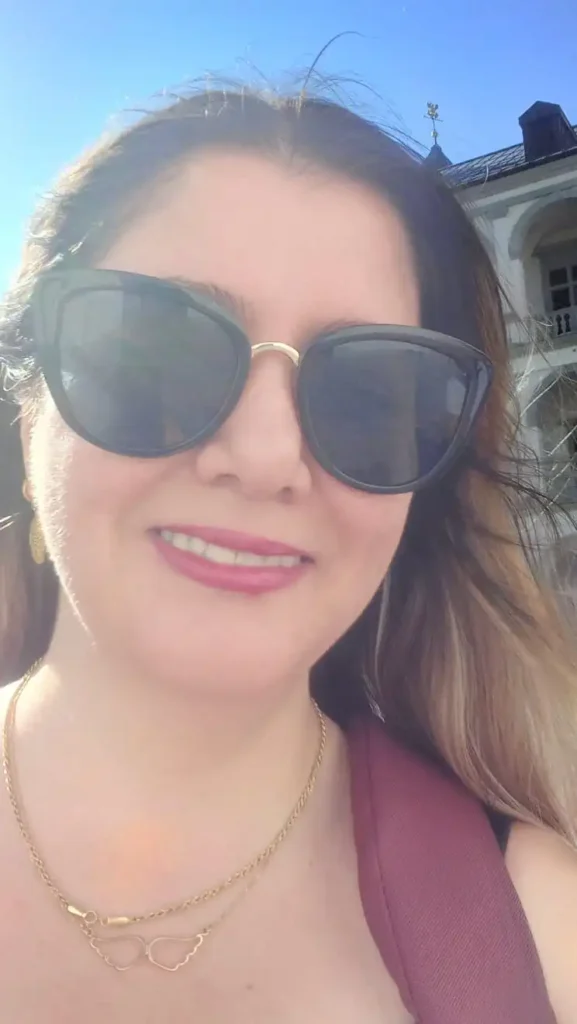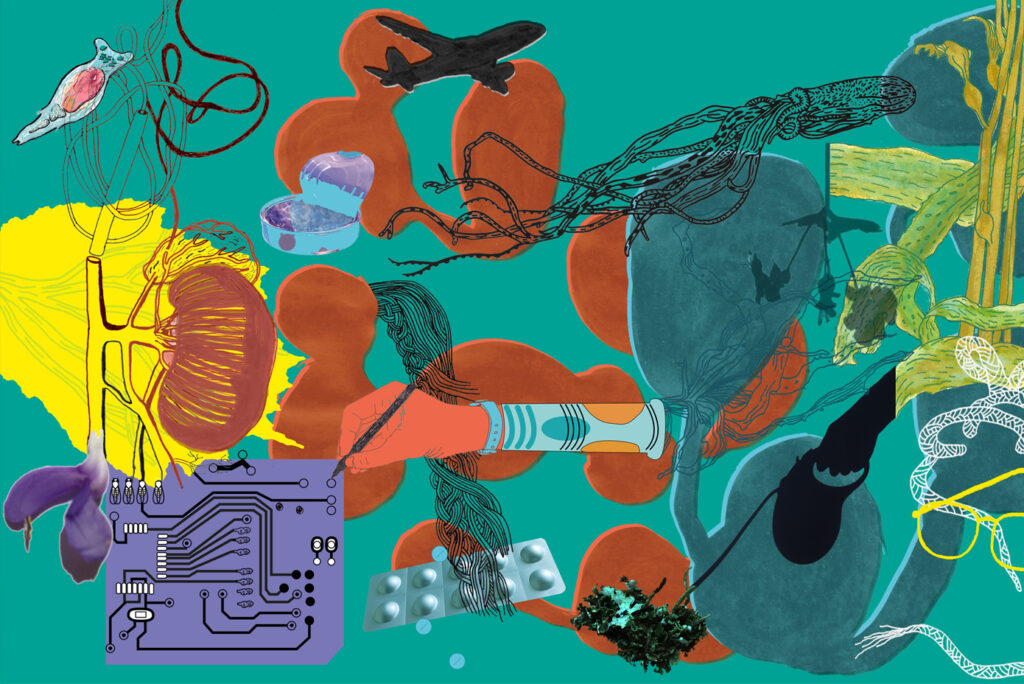Welcoming a multitude of storytelling practices and short forms of academic writing, we present essays and stories of theoretical or empirical relevance to our Hub-research. Testing the grounds, coining new analytical concepts, showcasing field notes, pedagogical approaches, creative writing, or stories of when you were wrong – this is your playground!
**** If you would like to contribute, please contact us. ****
An Image in Motion: Performing Plurality on the Dance Floor of a Fluid Time by Fateme Gholami

12 November 2024
As I look at the new banner of The Posthumanities Hub, it feels as though the image itself has a pulse, a faint hum of life that weaves through each detail, each fragment, Organic shapes—like plant structures with delicate veins—and anatomical figures, mingle with the geometric precision of technological elements such as circuitry and pill-like forms. They don’t stand alone, these shapes, but instead stretch out into endless continuums and merge into assemblages, forming webs of interconnected matters (all plural). It’s almost as though each line, each shape, is a tiny thread in a sprawling fabric, alive in its own way.


My eyes trace the flowing lines, like roots stretching through fertile soil, intertwining with the non-human forms that appear throughout. There’s a sense of something more, a whisper of a truth that lies beyond mere categorization. Nothing here exists in isolation, yet each entity holds its own story. This entanglement reminds me of how boundaries blur between nature and technology. The shapes flow together, passing through each other, erasing any clear lines dividing the organic from the inorganic.
As I study these forms, I feel a subtle invitation from them—a call to “stay with the trouble,” as if they’re urging us to linger with the complexities and lean into the fluid entanglements they represent. The scene embodies and hosts multiplicity, so many beings, animals, plants, circuitry, and pills. In this symbiosis, there’s no central figure, no place for the anthropos to stand alone at the center. Instead, everything flows, mingles, intermingles, passes through boundaries, morphs, dissolves, and eventually Becomes. Everything finds a transformative potentiality and becomes non-static. And that’s when I began believing in a world of constant becoming rather than rigid, fixed categories.
These pills, circuits, and organs are like storytellers themselves, quietly raising questions as they blend into this post-natural world. They speak of a future, one where the boundaries between human and technology, between biology and medicine, are not fixed, not rigid. They ask, “What does it mean to be human when our very humanness is reshaped by biotechnology when circuits and pills are as much a part of us as our own cells?”
And the beauty of this image lies not in its harmony, but in its symbiosis. Each element, intentionally (or otherwise) placed, performs plurality. It’s not a chaotic random juxtaposition, but rather a subtle coexistence, a relationship “with” rather than “against” the natural world. It is a dance floor for all performers all at the same time, the fluid time. This isn’t a still image; it’s a world in motion, a realm of potential, an ever-becoming—waiting to reveal itself with each glance, each moment we dare to stay a little longer because the artist, Anna Hedberg, has captured, with such mastery, the zeitgeist of not only the Posthumanities Hub but of our times.